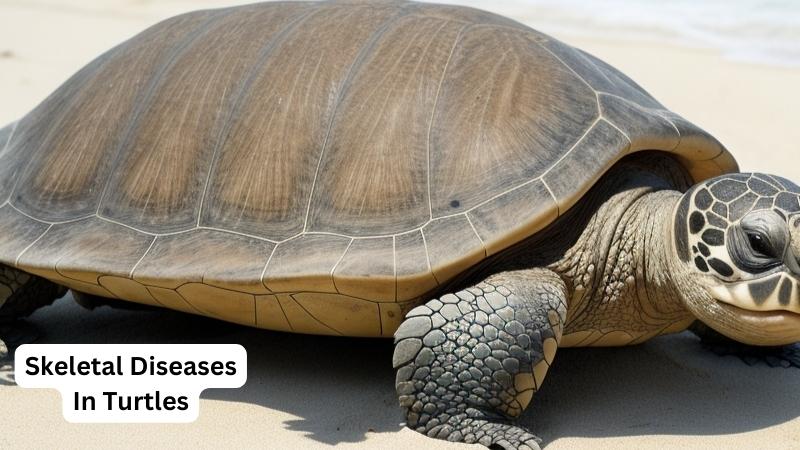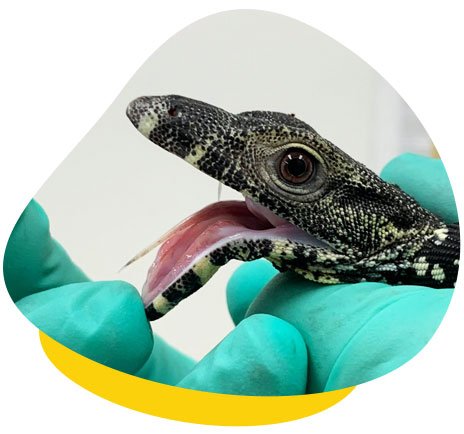Skeletal Diseases In Turtles: Causes, Symptoms & Treatments
Skeletal diseases in turtles can be a cause for concern among pet owners and wildlife enthusiasts alike. If you’ve ever wondered how to identify and treat these conditions, you’re in the right place. In this article, we’ll explore the common skeletal diseases that affect turtles and provide valuable insights into their causes and potential solutions. By understanding these issues, you’ll be better equipped to ensure the well-being and longevity of these fascinating creatures. So, let’s delve into the world of skeletal diseases in turtles and uncover ways to promote their optimal health, step by step.
Skeletal Diseases in Turtles:
Turtles are fascinating creatures known for their unique skeletal structure, which provides them with both protection and mobility. However, just like any other living beings, turtles can also suffer from various skeletal diseases that affect their health and well-being.
In this comprehensive article, we will delve into the world of skeletal diseases in turtles, exploring the causes, symptoms, treatment options, and preventive measures associated with these conditions.
Whether you are a turtle enthusiast, a pet owner, or simply curious about these remarkable reptiles, this article aims to provide you with a thorough understanding of skeletal diseases in turtles.
1. Shell Rot
Shell rot is a common skeletal disease that affects turtles, particularly those living in suboptimal conditions. It is caused by a bacterial or fungal infection that targets the outer layer of the turtle’s shell, known as the carapace. Improper diet, inadequate hygiene, and inadequate habitat conditions can contribute to the development of shell rot.
Some of the common symptoms of shell rot include discoloration, softening or erosion of the shell, foul smell, and in severe cases, the exposure of underlying tissue.
1.1 Causes
Shell rot is primarily caused by poor hygiene and unsanitary living conditions. Factors that contribute to shell rot in turtles include:
- Dirty and unclean water
- Poor diet lacking in essential nutrients
- Inadequate UVB light exposure
- Incorrect temperature and humidity levels in the habitat
- Poor water quality with high ammonia and nitrate levels
1.2 Treatment and Prevention
Treating shell rot requires a multi-faceted approach that addresses both the underlying infection and the environmental factors contributing to the disease. Here are some treatment and prevention measures:
- Isolate the affected turtle to prevent the spread of infection
- Clean the infected area with an antiseptic solution
- Provide a clean and well-maintained habitat
- Ensure proper nutrition and dietary supplementation
- Monitor water conditions regularly to maintain optimal quality
2. Metabolic Bone Disease (MBD)
Metabolic Bone Disease (MBD) is a serious skeletal disorder that affects the overall bone health of turtles. It is caused by a deficiency in calcium, vitamin D, or both, leading to improper bone development and weakness. MBD can result in deformities, fractures, and skeletal abnormalities in turtles.
2.1 Causes
Metabolic Bone Disease in turtles is primarily caused by inadequate nutrition and incorrect housing conditions. Some common causes include:
- Lack of access to a proper calcium-rich diet
- Inadequate exposure to UVB light, essential for vitamin D synthesis
- Insufficient temperature and humidity regulation in the habitat
2.2 Symptoms and Diagnosis
The symptoms of MBD can vary depending on the severity and duration of the disease. Some common signs include:
- Softening and deformity of the shell
- Bowed or swollen limbs
- Lethargy and weakness
- Fractures and bone abnormalities
A veterinarian can diagnose MBD through a combination of physical examination, blood tests, and X-rays to assess the turtle’s bone density.
2.3 Treatment and Prevention
Treating MBD involves addressing the underlying nutritional deficiencies and improving the turtle’s living conditions. Some treatment and prevention strategies include:
- Calcium and vitamin D supplementation under veterinary guidance
- Proper exposure to UVB light for vitamin D synthesis
- Correcting temperature and humidity levels in the habitat
- Providing a balanced and calcium-rich diet
3. Traumatic Injuries
Turtles are prone to traumatic injuries, particularly fractures and shell damage, due to their slow-moving nature and exposure to potential hazards in their environment. These injuries can occur from falls, predator attacks, or collisions with objects.
3.1 Types of Traumatic Injuries
Some common types of traumatic injuries seen in turtles include:
- Shell fractures
- Limbs and skeletal fractures
- Soft tissue injuries
- Internal organ damage
3.2 Symptoms and Treatment
The symptoms of traumatic injuries in turtles can vary depending on the site and severity of the injury. Some common symptoms include:
- Visible fractures or wounds
- Difficulty moving or limping
- Blood in the urine or feces
- Signs of pain or distress
Treatment for traumatic injuries depends on the specific injury and its severity. In cases of fractures, surgical intervention may be required, while wounds and soft tissue injuries need proper cleaning, disinfection, and bandaging.
4. Vitamin A Deficiency
Vitamin A deficiency is a common nutritional disorder that affects turtles, leading to various skeletal and systemic health issues. Turtles primarily obtain vitamin A from their diet, and a lack of this essential nutrient can disrupt their skeletal development and overall well-being.
4.1 Causes and Symptoms
Vitamin A deficiency in turtles can be caused by several factors, including:
- Imbalanced or inadequate diet
- Malabsorption issues
- Improper UVB light exposure
Symptoms of vitamin A deficiency may include:
- Swollen eyelids and conjunctivitis
- Skeletal deformities
- Respiratory infections
- Decreased appetite and weight loss
4.2 Treatment and Prevention
Treating vitamin A deficiency involves addressing the underlying nutritional imbalance and providing appropriate dietary supplementation. Additionally, ensuring proper UVB light exposure and overall habitat conditions can aid in preventing this deficiency.
5. Shell Deformities
Shell deformities are a diverse group of skeletal disorders that affect the shape, size, or structure of a turtle’s shell. These deformities can arise due to genetic factors, environmental conditions, or a combination of both.
5.1 Causes
Shell deformities in turtles can have various causes, including:
- Genetic predisposition
- Improper incubation conditions
- Environmental pollutants
- Malnutrition
- Inadequate habitat conditions
5.2 Types of Shell Deformities
Some common types of shell deformities include:
- Pyramiding: The shell grows in a pyramid-like shape instead of its natural flat appearance.
- Pygmy shell: The shell remains undersized and fails to develop properly.
- Flipped or sunken scutes: The individual scutes on the shell either flip upwards or sink inward.
5.3 Treatment and Prevention
Correcting shell deformities can be challenging, and the success of treatment depends on the severity and underlying cause of the deformity. Treatment options may include:
- Modifying diet and nutrition to support proper shell growth
- Optimizing habitat conditions
- Assisting with shell realignment in certain cases
- Preventing further progression of deformities through proper care and husbandry
6. Conclusion
Turtles, with their intricate skeletal structure, are vulnerable to various diseases and disorders that can significantly impact their overall health. From shell rot to metabolic bone disease, traumatic injuries, vitamin deficiencies, and shell deformities, understanding the causes, symptoms, and treatment options for these skeletal diseases is crucial for ensuring the well-being of these fascinating creatures. By providing them with proper nutrition, a suitable habitat, and regular veterinary care, we can help prevent and manage skeletal diseases in turtles, allowing them to thrive and live fulfilling lives in their natural or captive environments.

Faqs for Skeletal Diseases In Turtles:
Common skeletal diseases in turtles include metabolic bone disease, shell pyramiding, and soft shell syndrome. Metabolic bone disease is caused by a calcium and/or vitamin D deficiency, resulting in weakened bones.
Shell pyramiding is a condition where the turtle’s shell becomes raised and pyramid-like due to improper diet and growth. Soft shell syndrome occurs when a turtle’s shell fails to harden properly, often due to a lack of exposure to UVB light or poor nutrition.
Signs and symptoms of skeletal diseases in turtles may include soft or misshapen shells, weak or brittle bones, swelling or deformities in limbs or joints, and difficulty moving or walking. Turtles with skeletal diseases may avoid using their limbs, have poor appetite, and show signs of pain or discomfort.
Metabolic bone disease in turtles can be prevented by providing a well-balanced diet that includes foods rich in calcium and vitamin D3. Turtles also require exposure to UVB light to synthesize vitamin D3 and properly absorb calcium. It is important to offer a variety of calcium-rich foods, such as leafy greens and calcium supplements, and ensure the turtle has access to full-spectrum UVB lighting.
Shell pyramiding in turtles cannot be reversed once it has occurred. It is essential to address the underlying causes, such as improper diet and growth, to prevent further progression of the condition. Providing a balanced diet, maintaining appropriate temperatures and humidity, and ensuring proper UVB lighting can help prevent shell pyramiding in turtles.
Soft shell syndrome in turtles is treated by addressing the underlying causes. This may involve providing a calcium-rich diet, UVB light exposure, and ensuring proper water quality and temperature. A veterinarian may also recommend calcium and vitamin D3 supplements, as well as monitoring the turtle’s overall health and providing supportive care.
No, skeletal diseases in turtles are not contagious. These conditions are typically caused by improper husbandry practices, inadequate nutrition, or lack of UVB exposure. However, it is important to ensure a clean and appropriate environment for turtles, as poor water quality or unsanitary conditions can contribute to the development of skeletal diseases.
Final Thoughts:
skeletal diseases in turtles are a prevalent and concerning issue. These conditions can manifest in various forms, including shell deformities, bone infections, and malnutrition-related skeletal disorders. Recognizing and addressing these diseases is essential for the well-being and survival of turtles in both the wild and captivity. Timely veterinary care, proper nutrition, and meticulous husbandry practices play crucial roles in preventing and treating skeletal diseases. By promoting education and awareness, we can ensure the conservation and protection of these remarkable creatures’ skeletal health.
